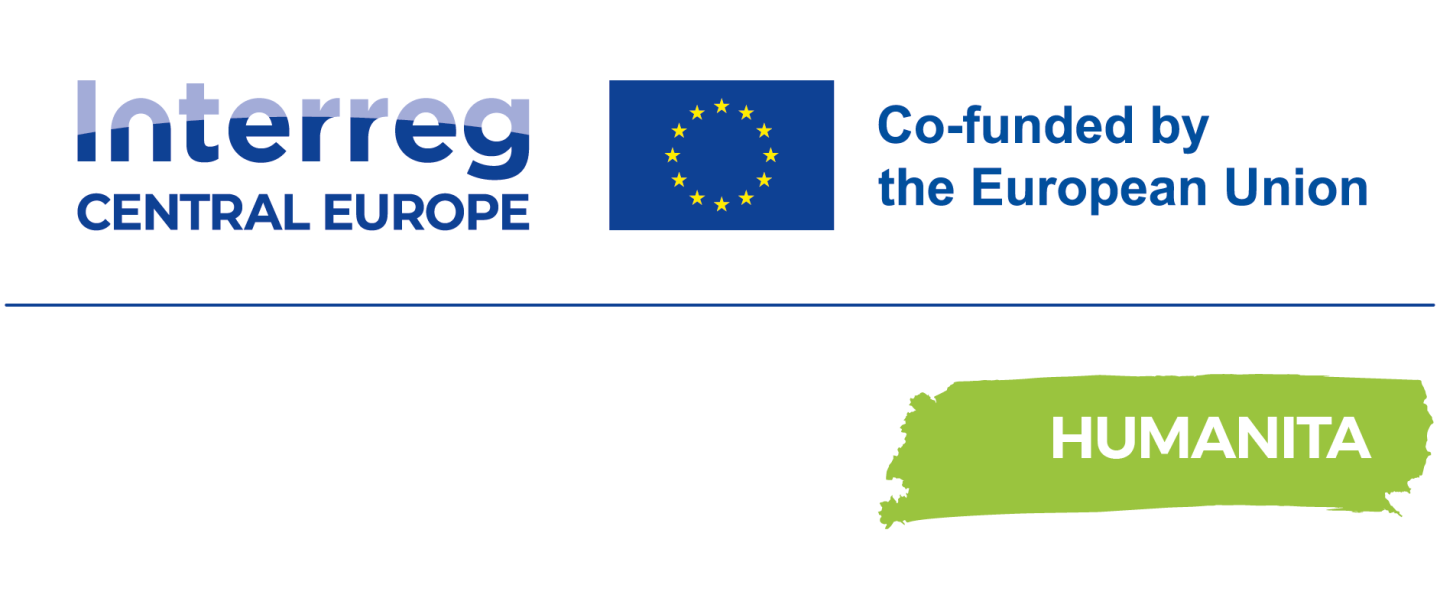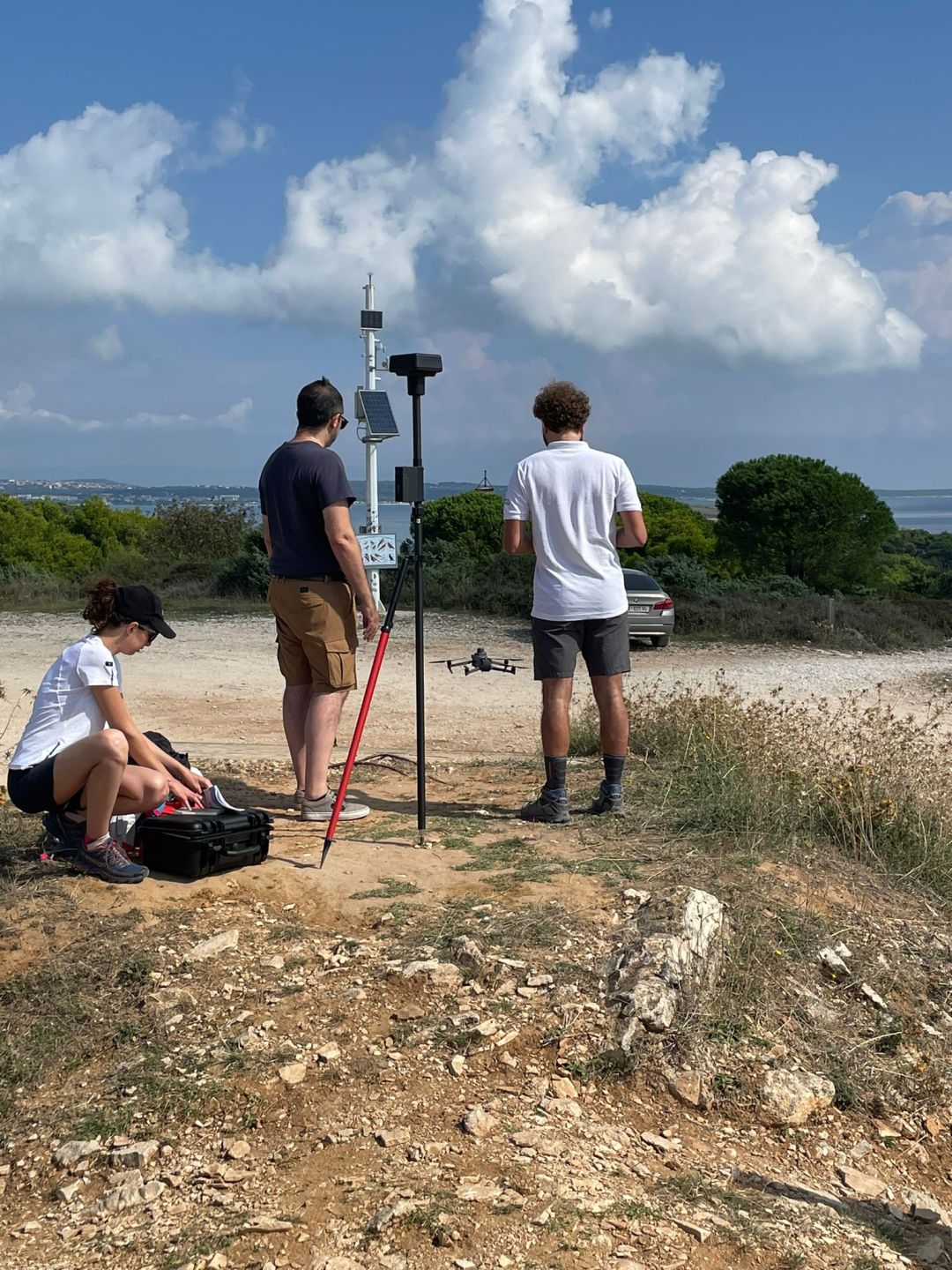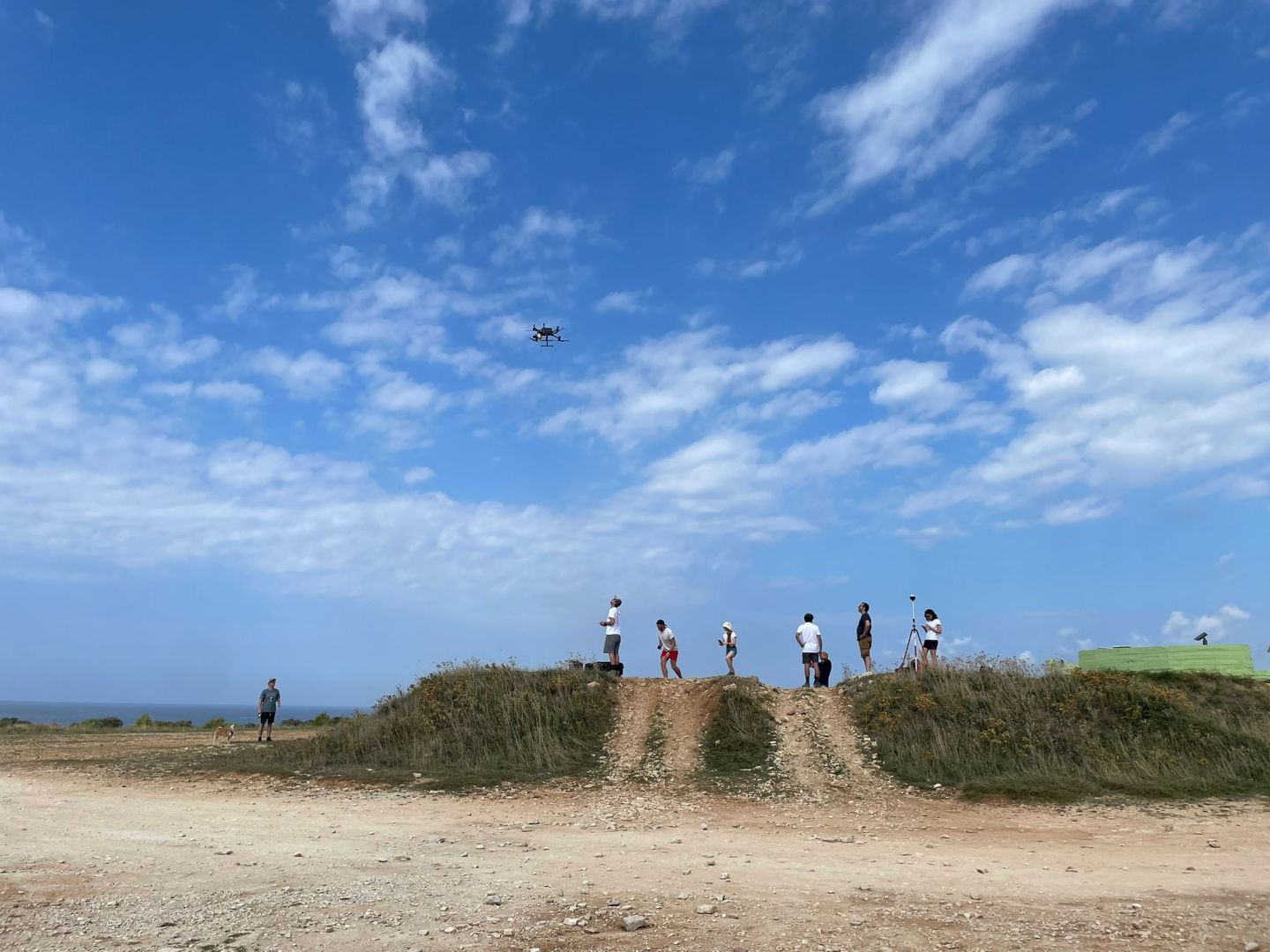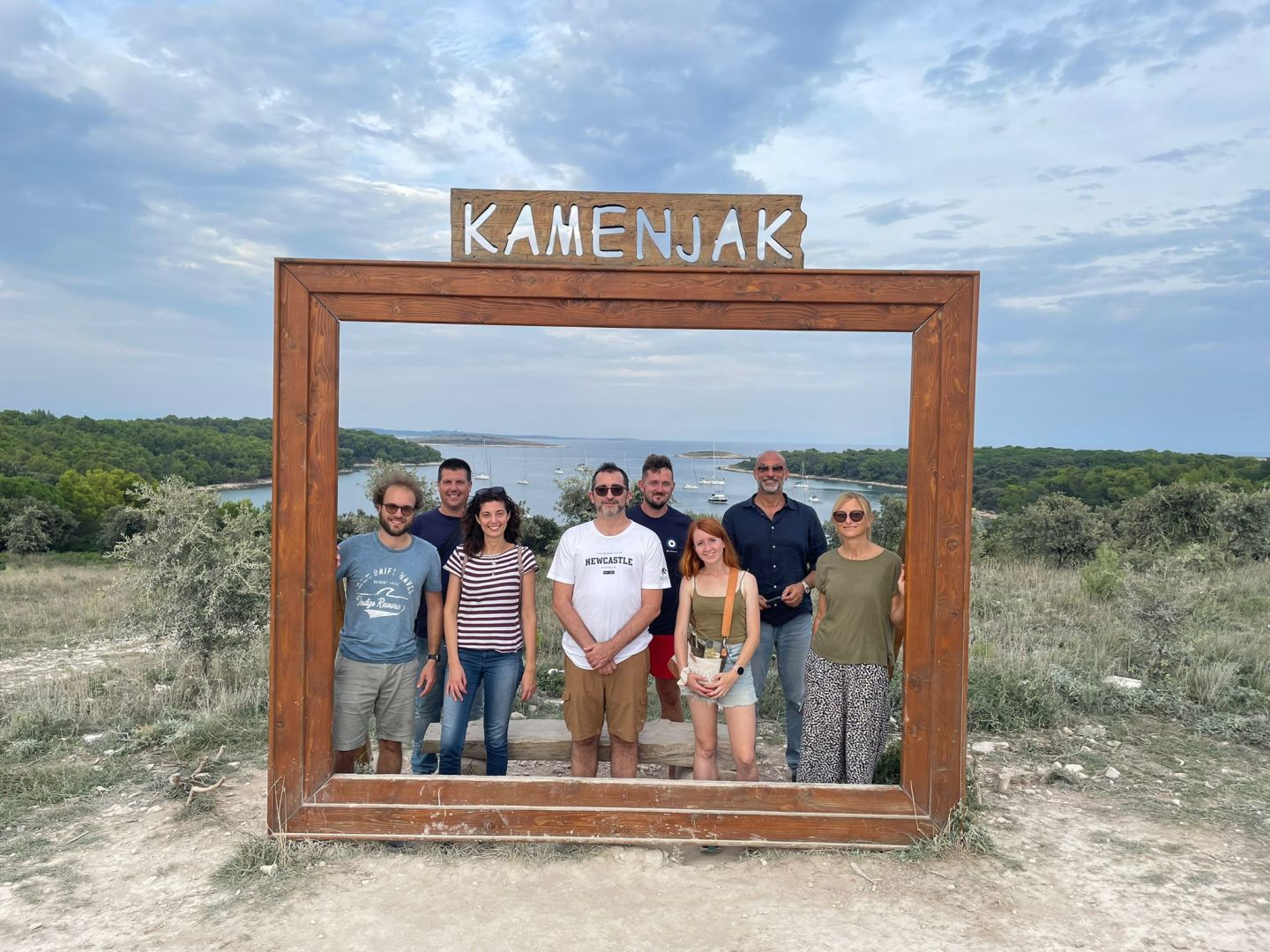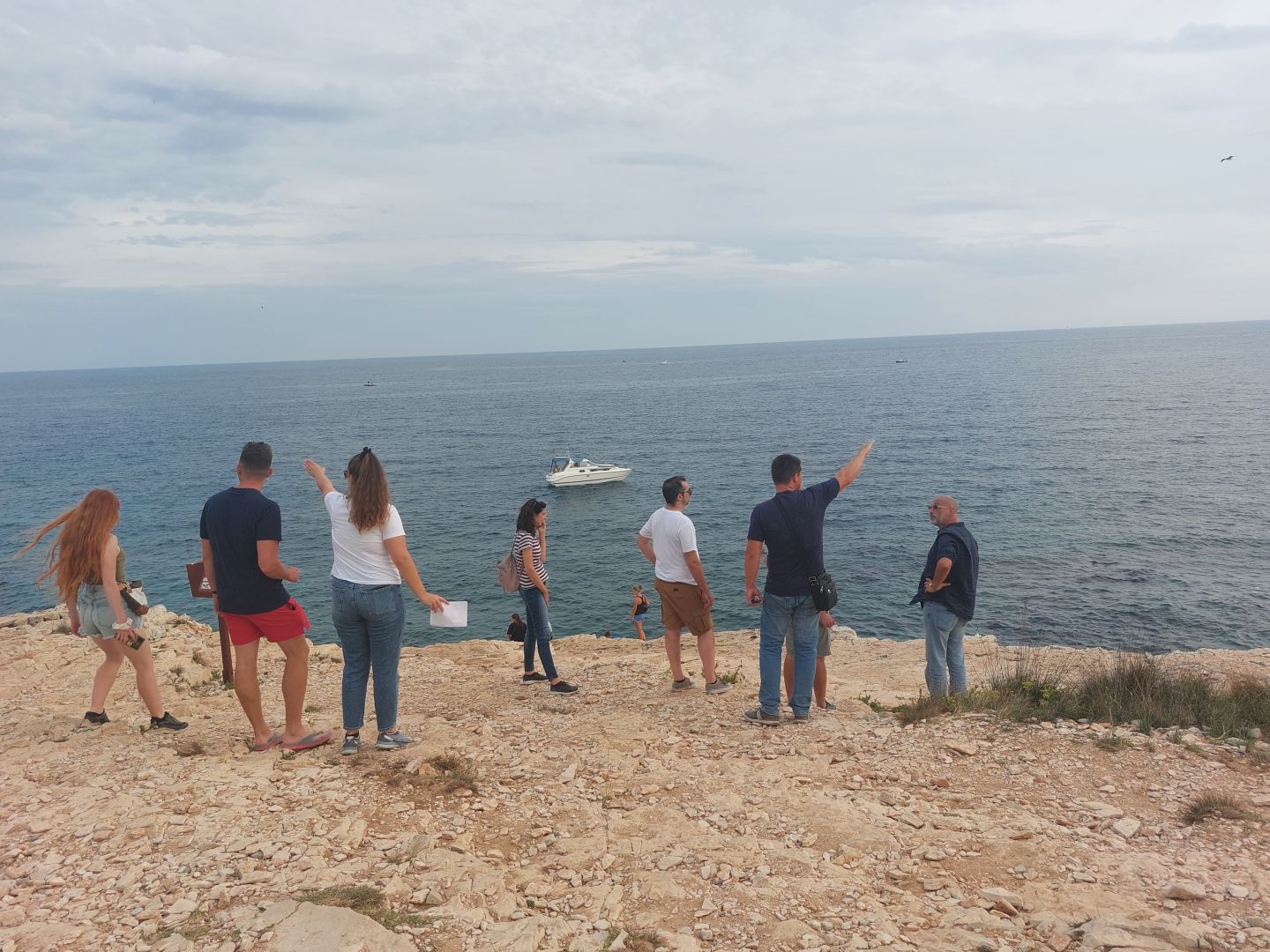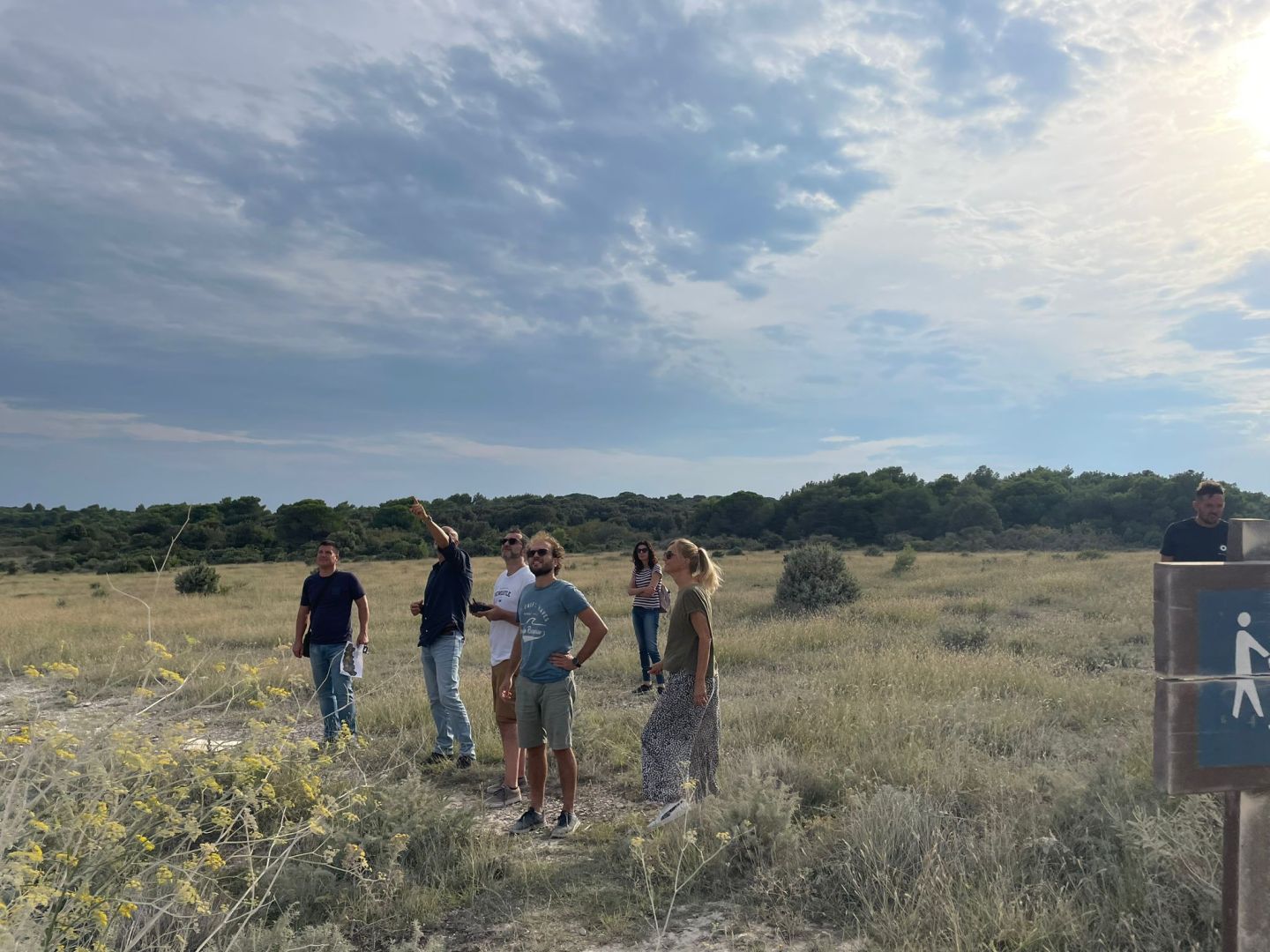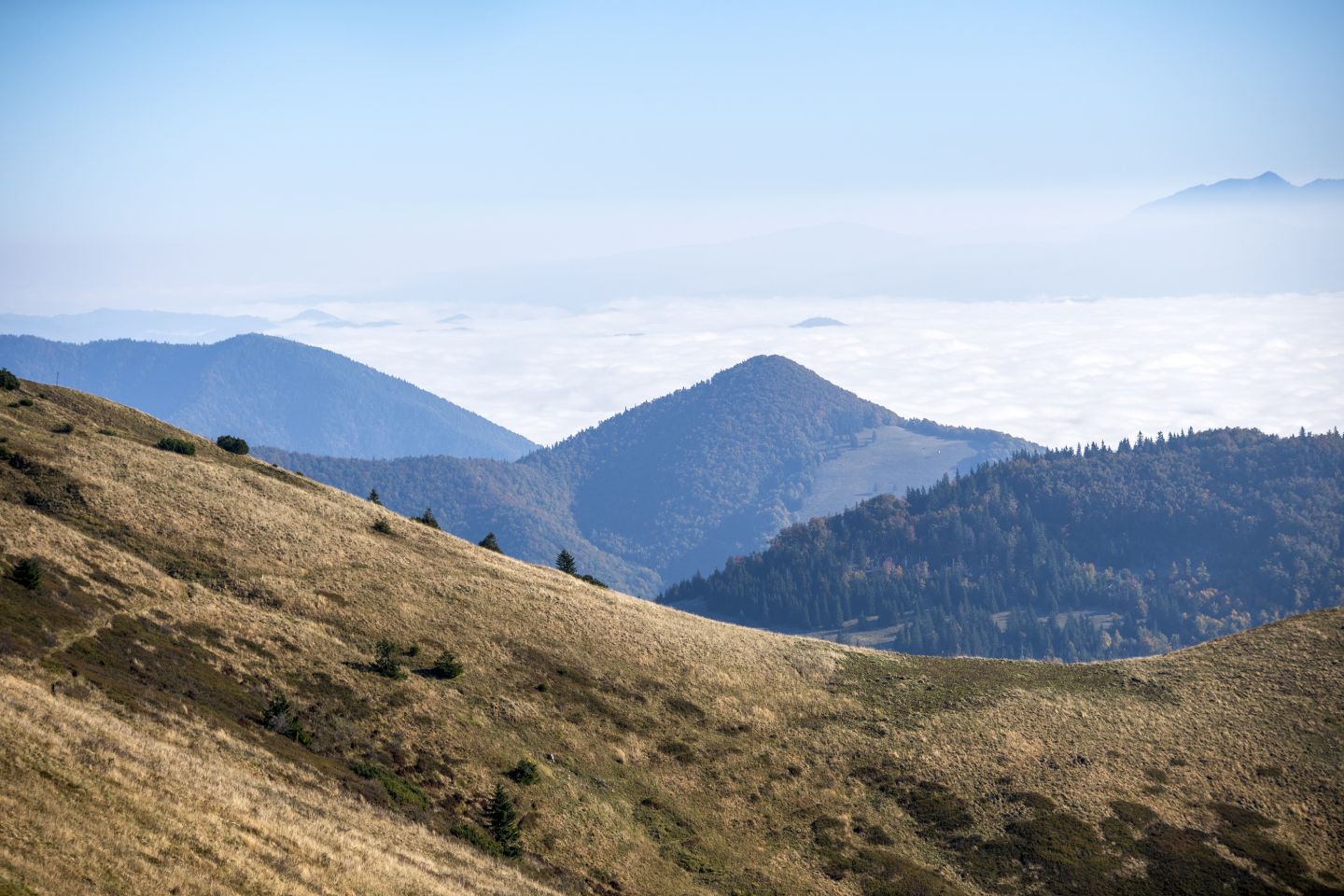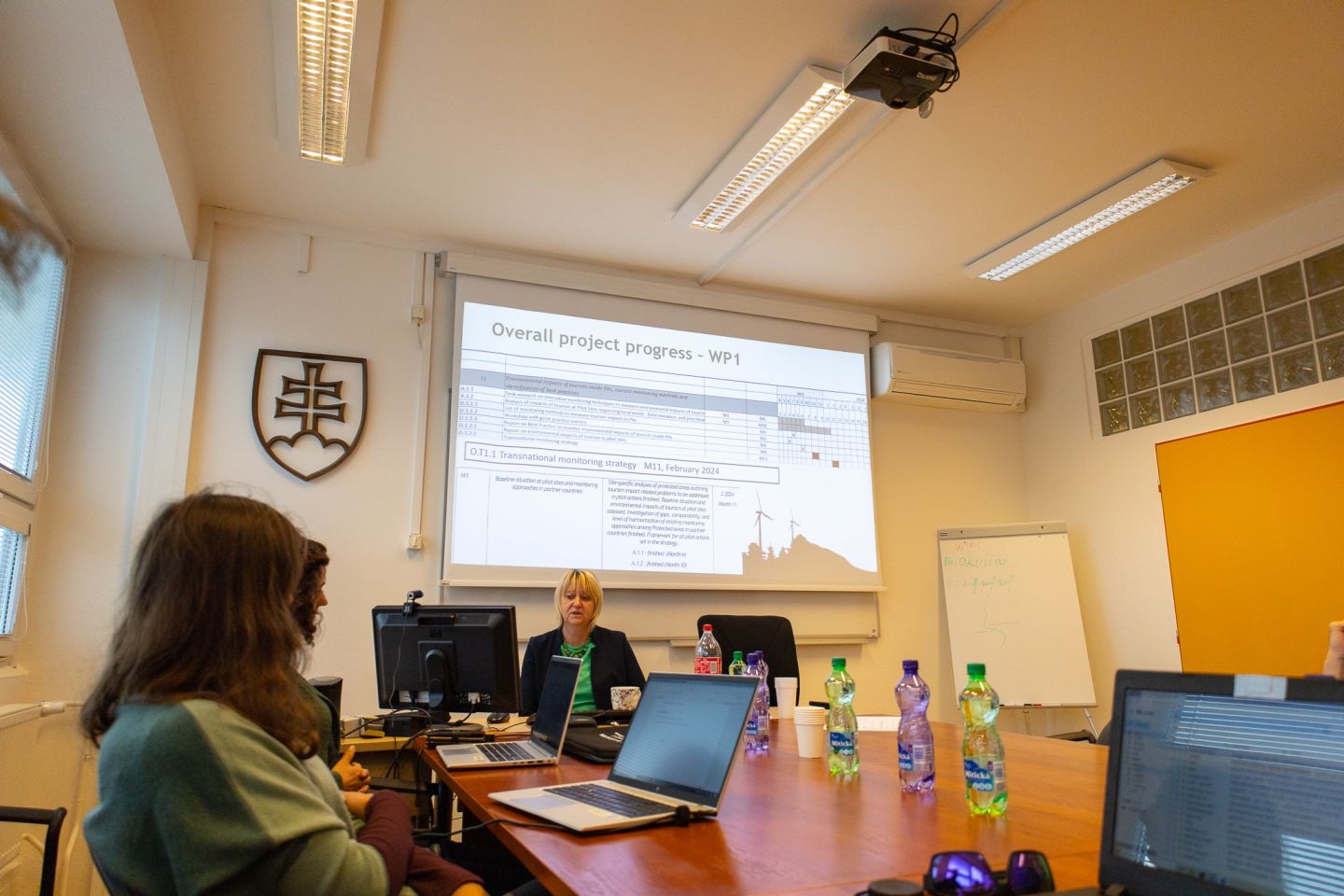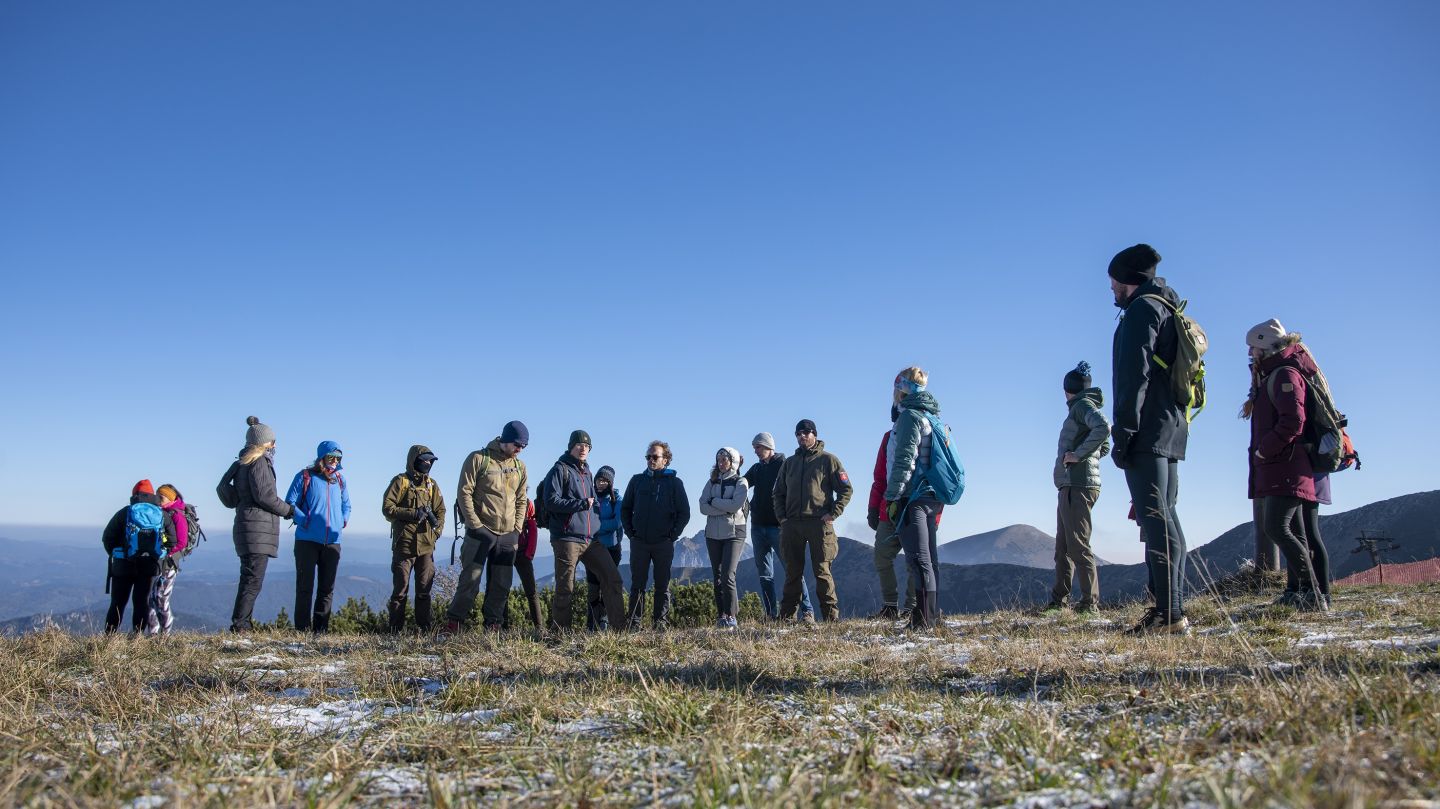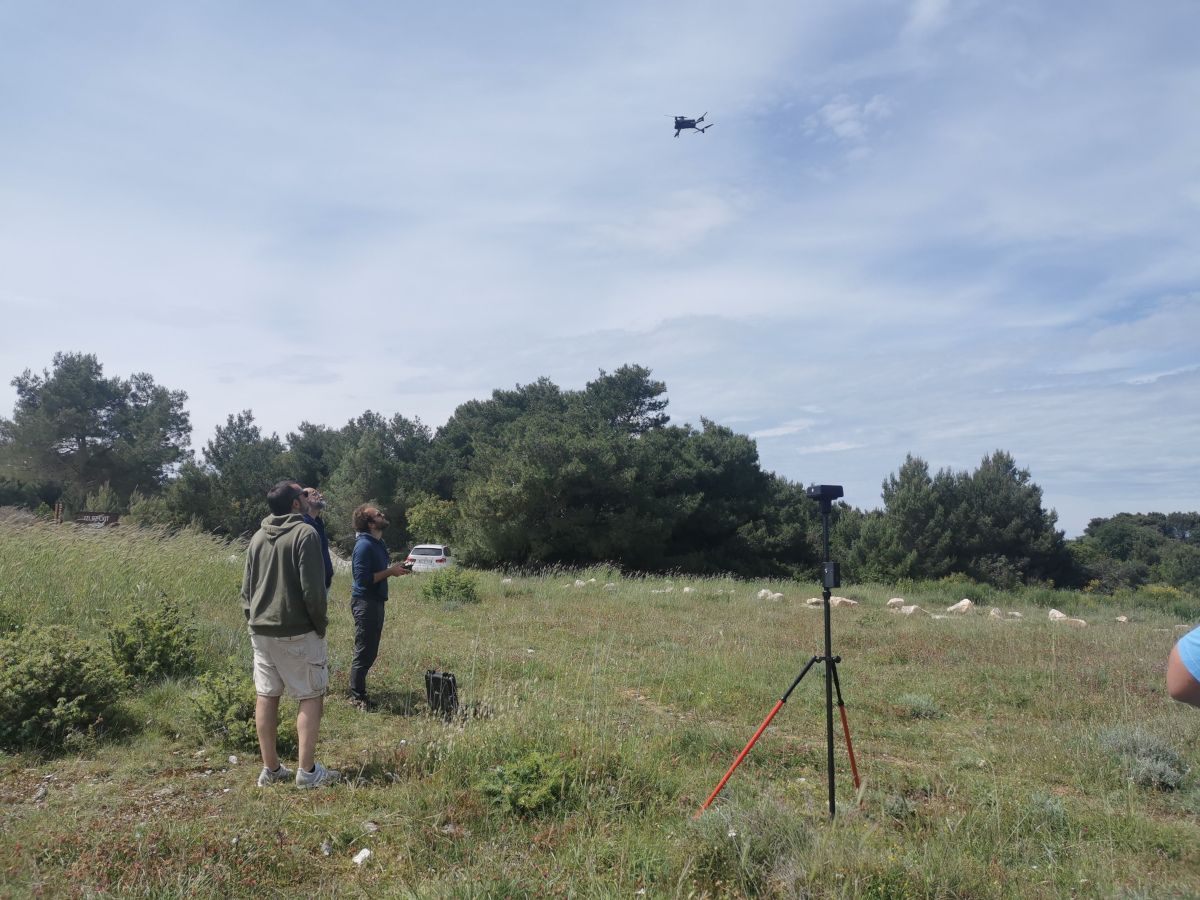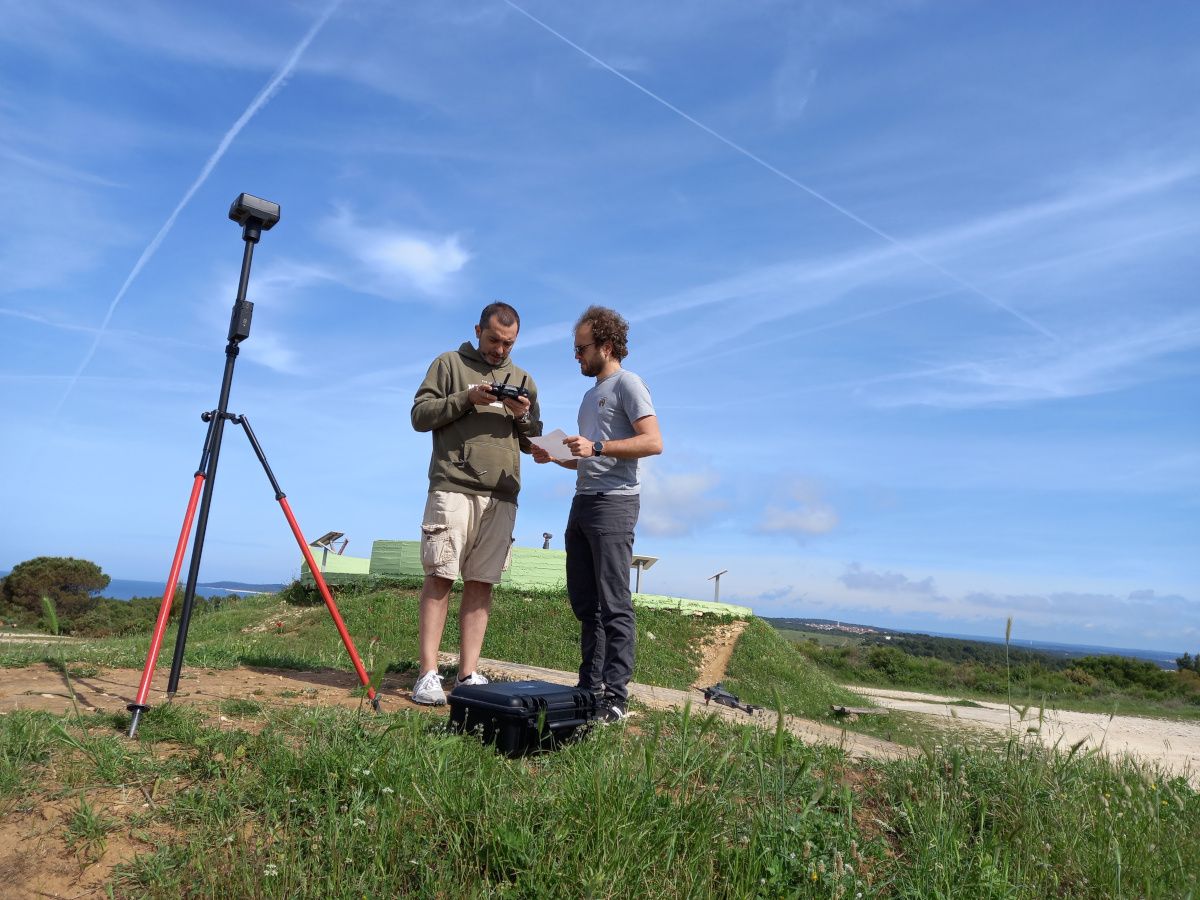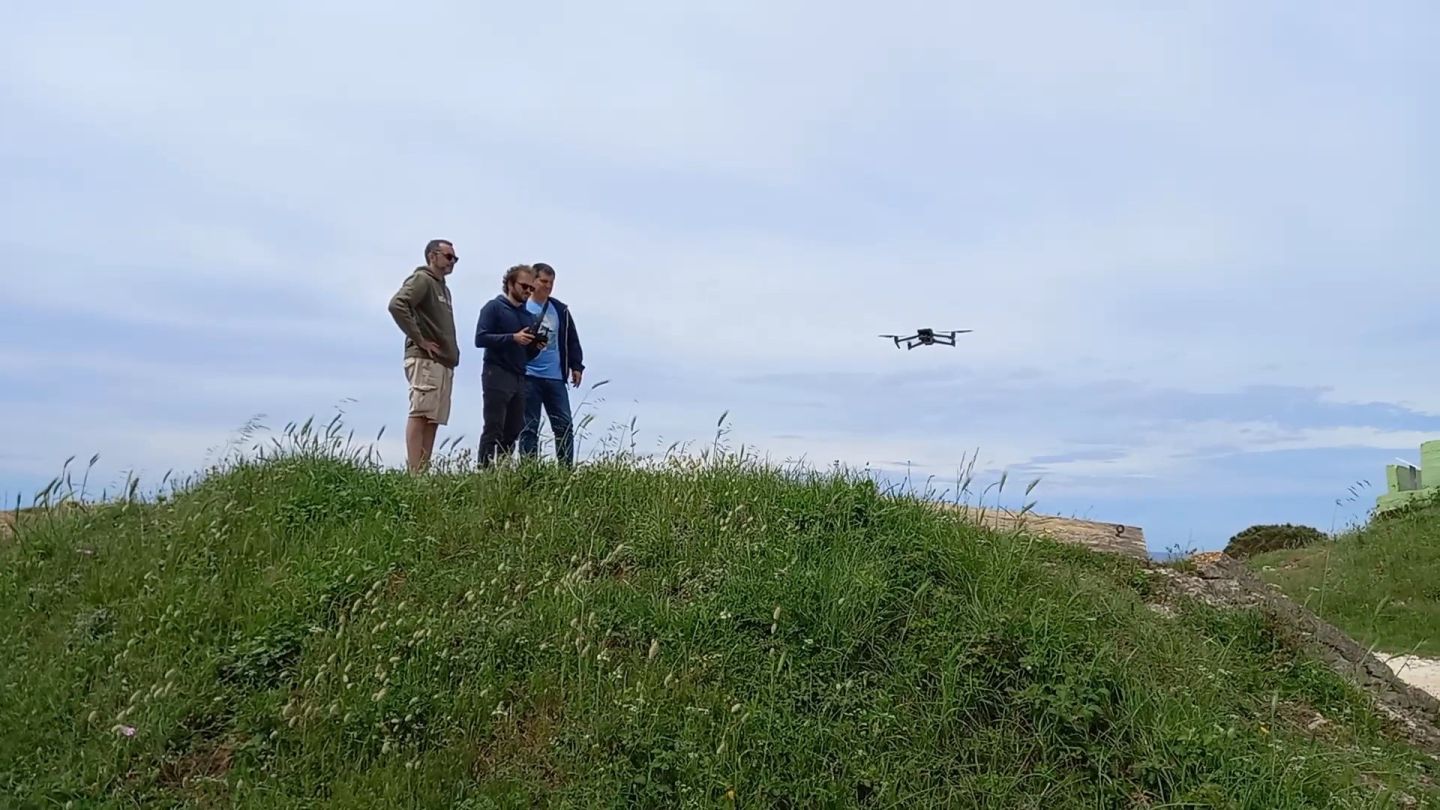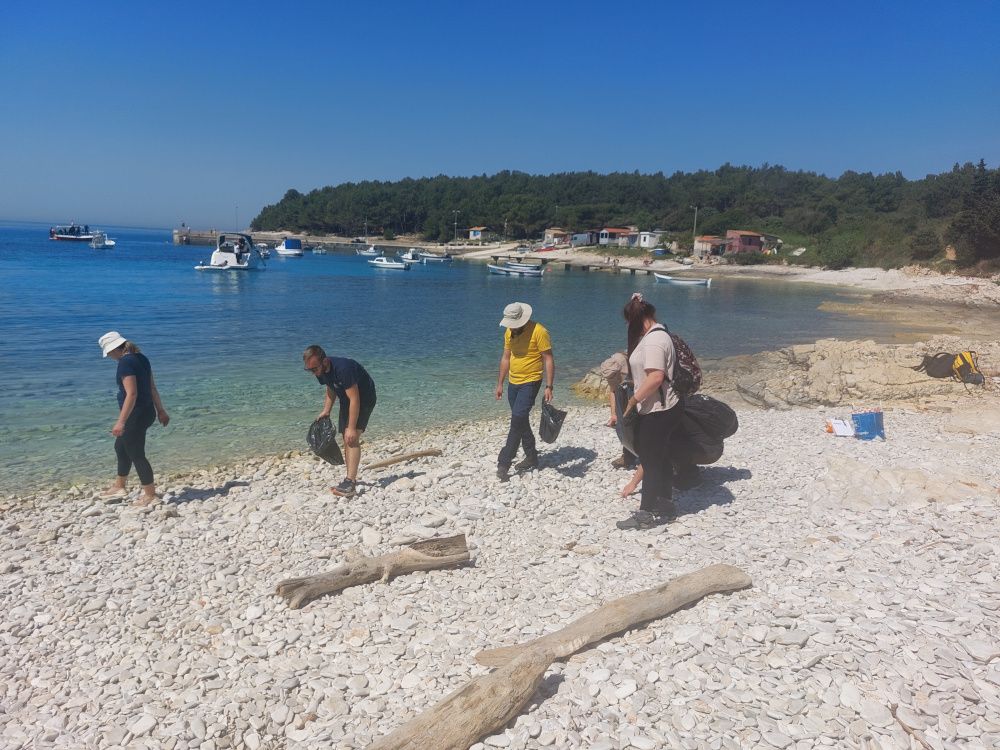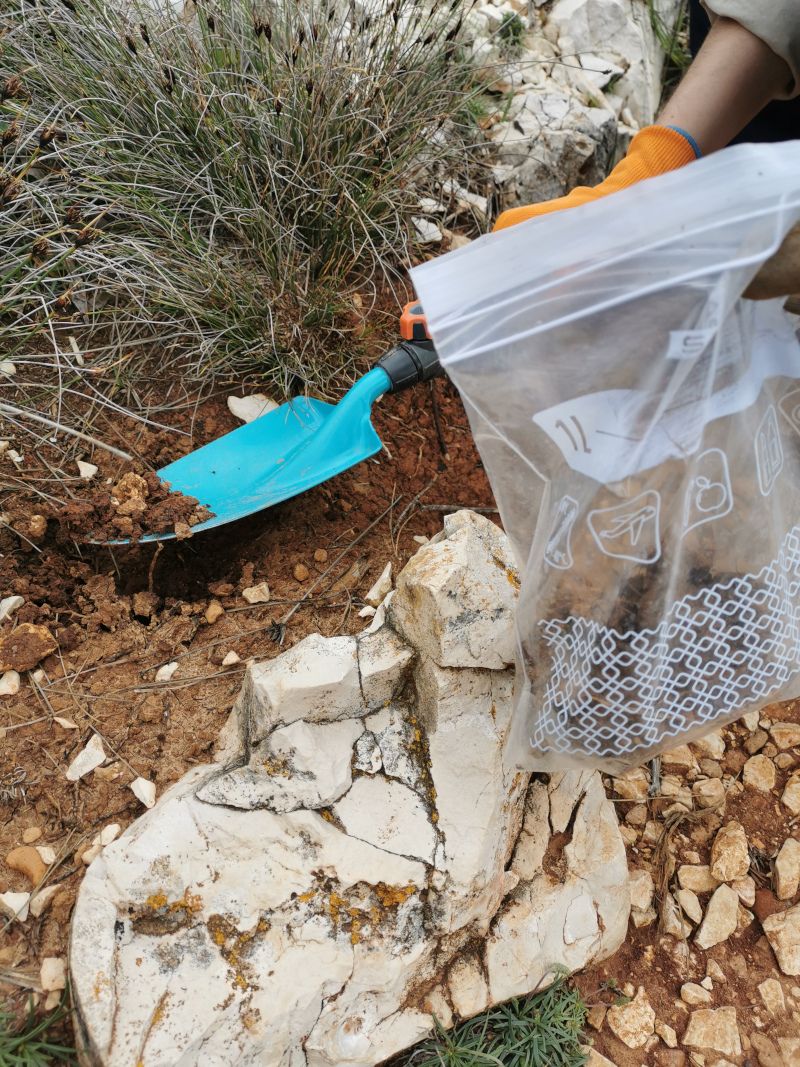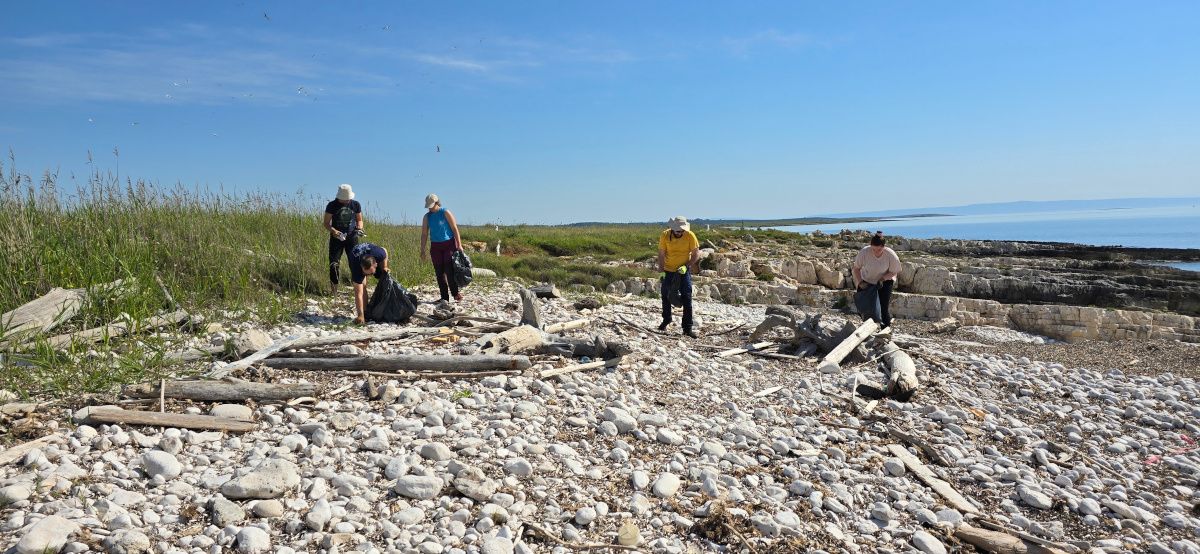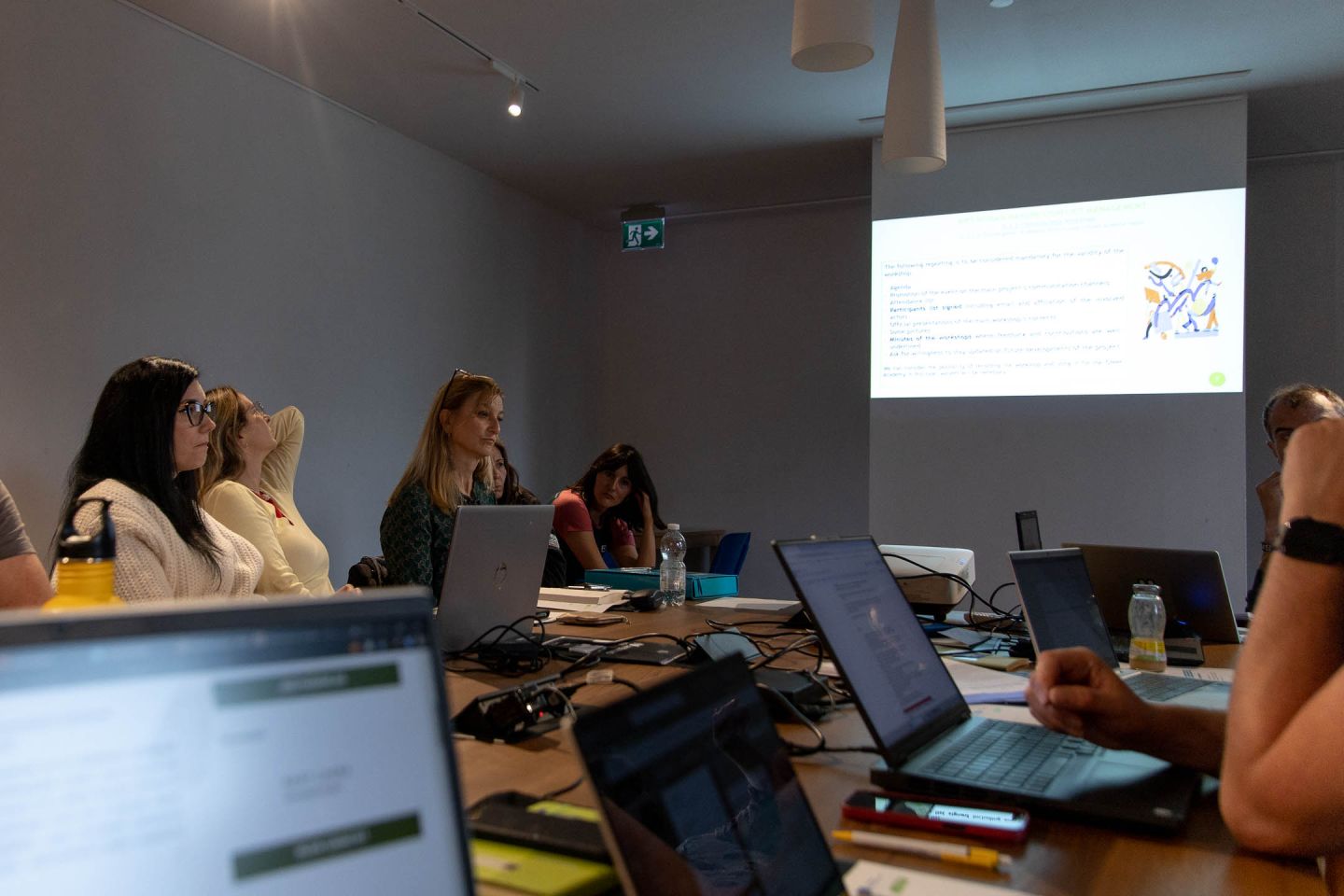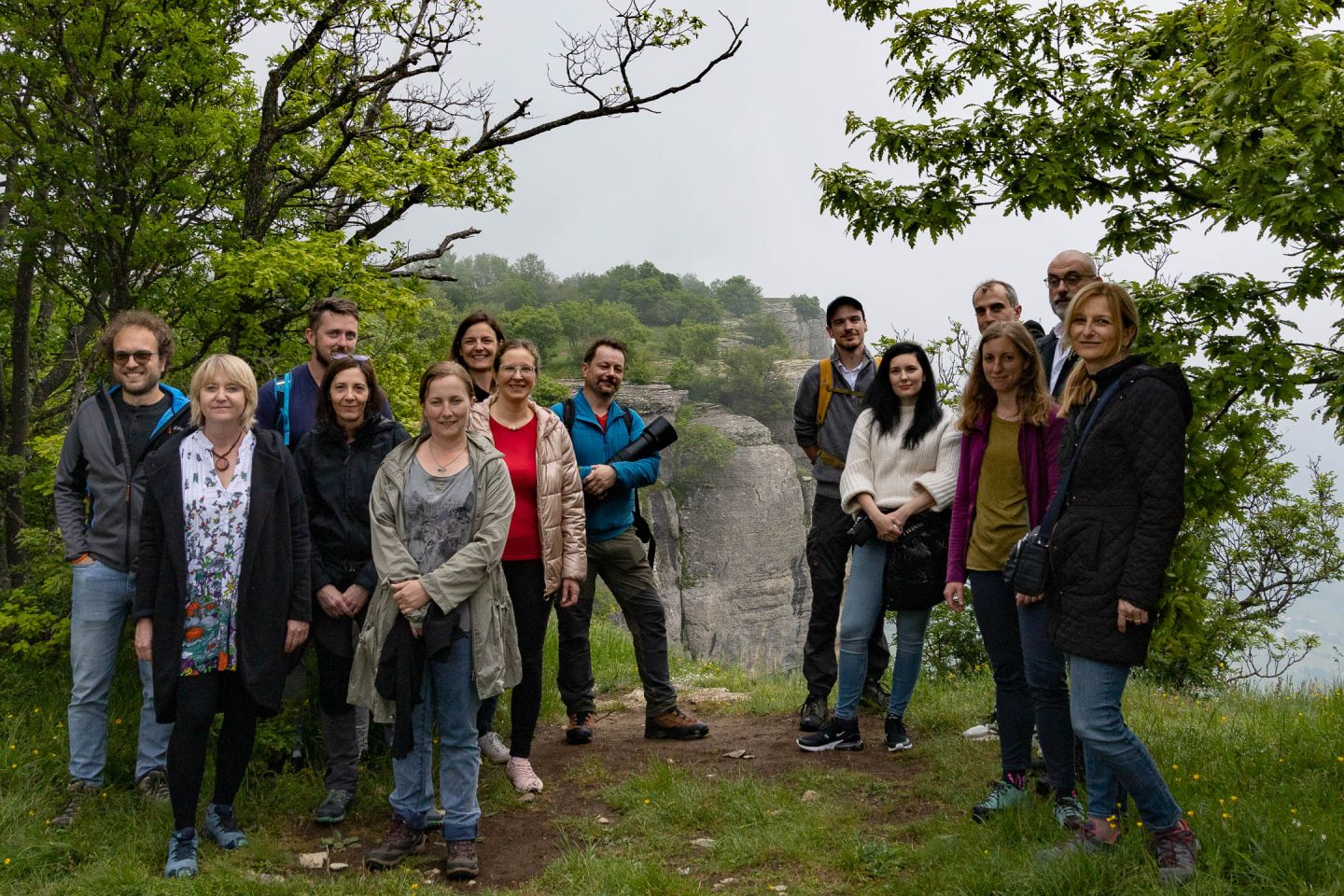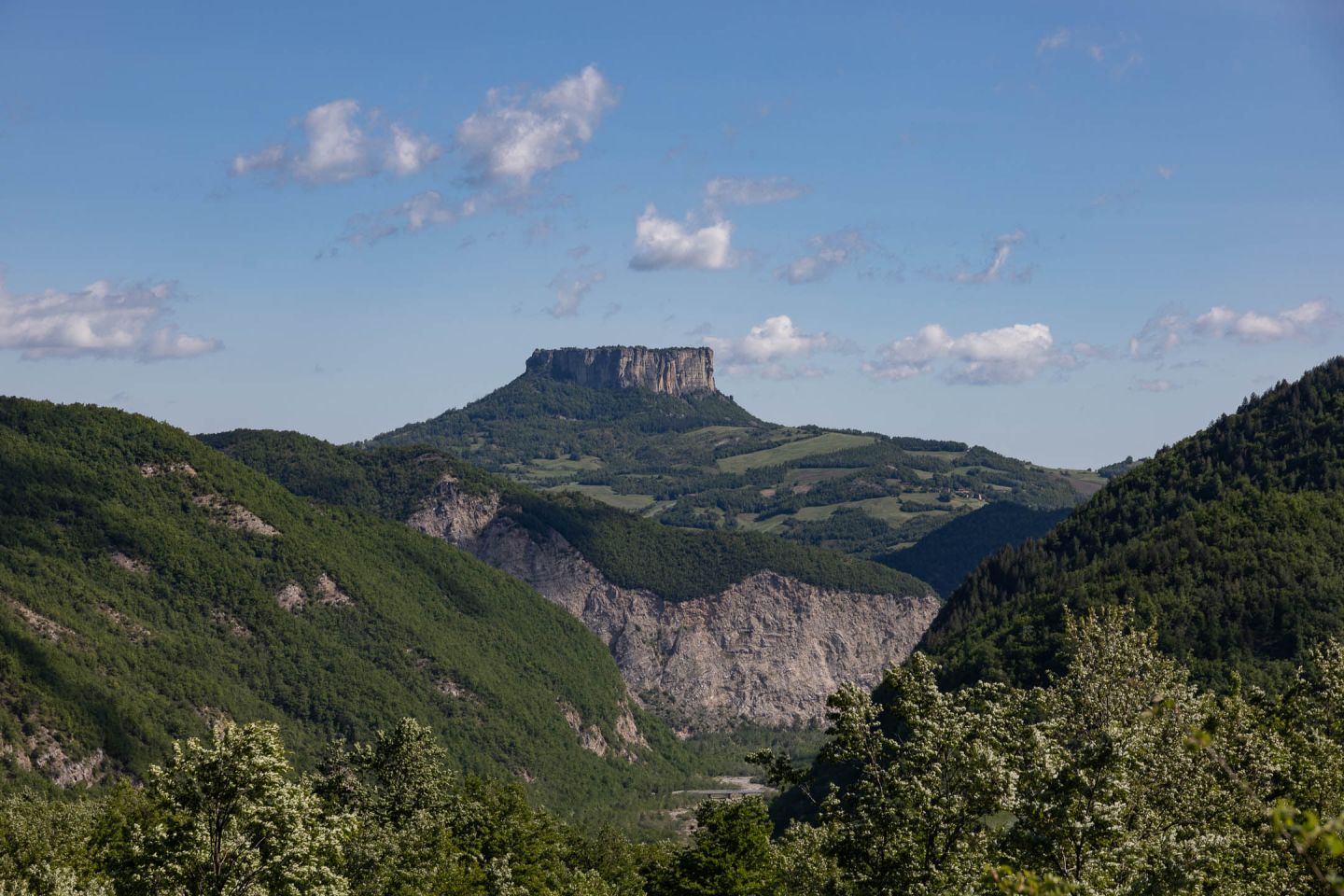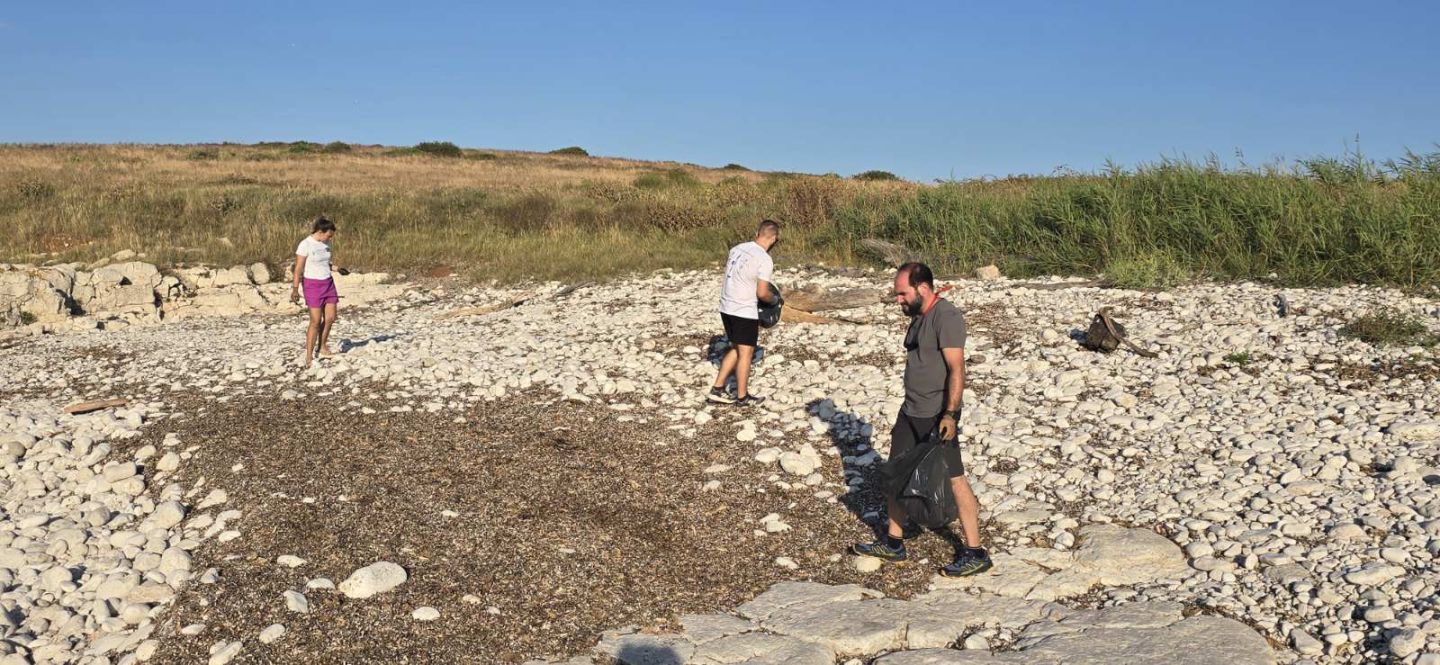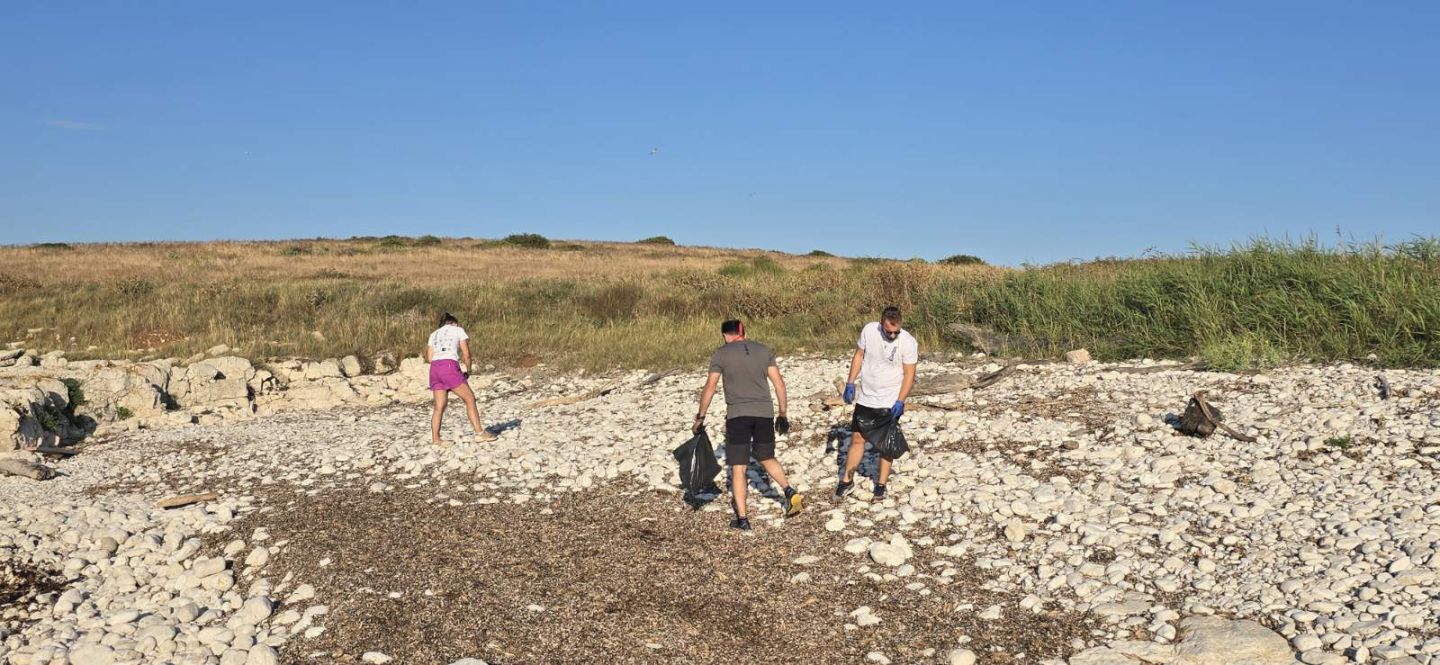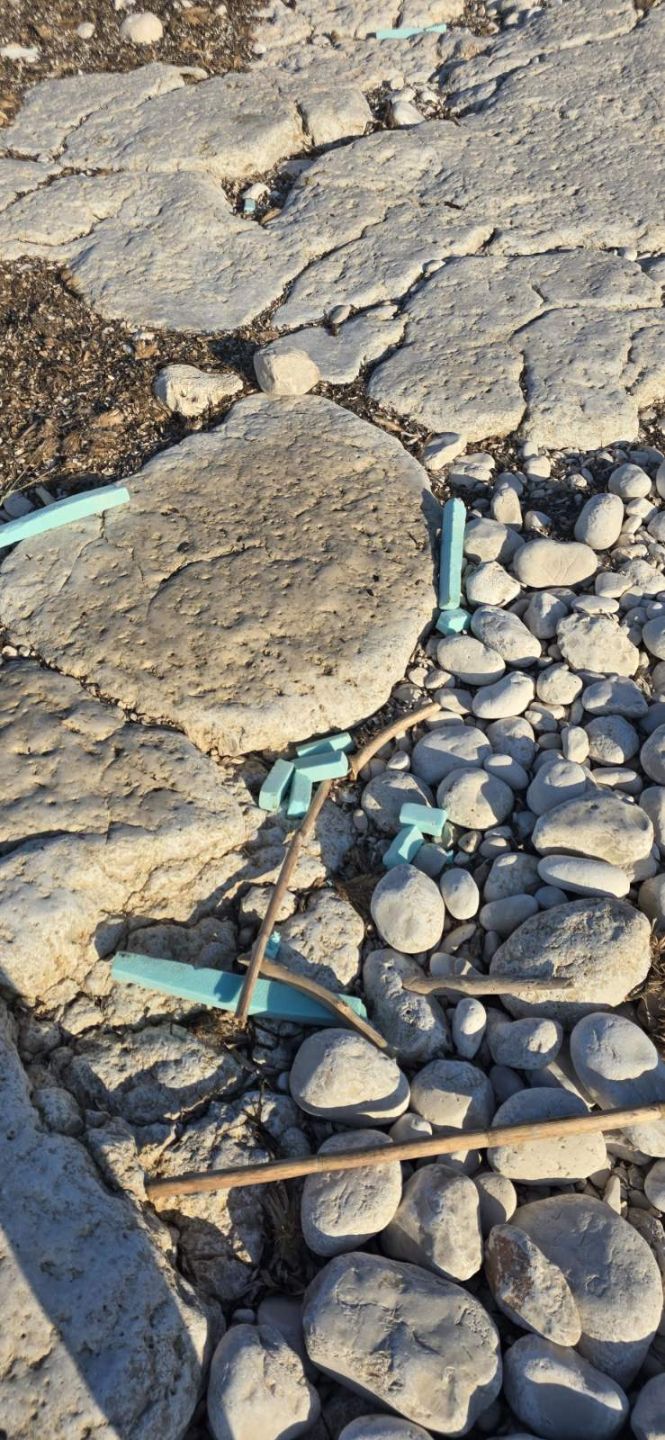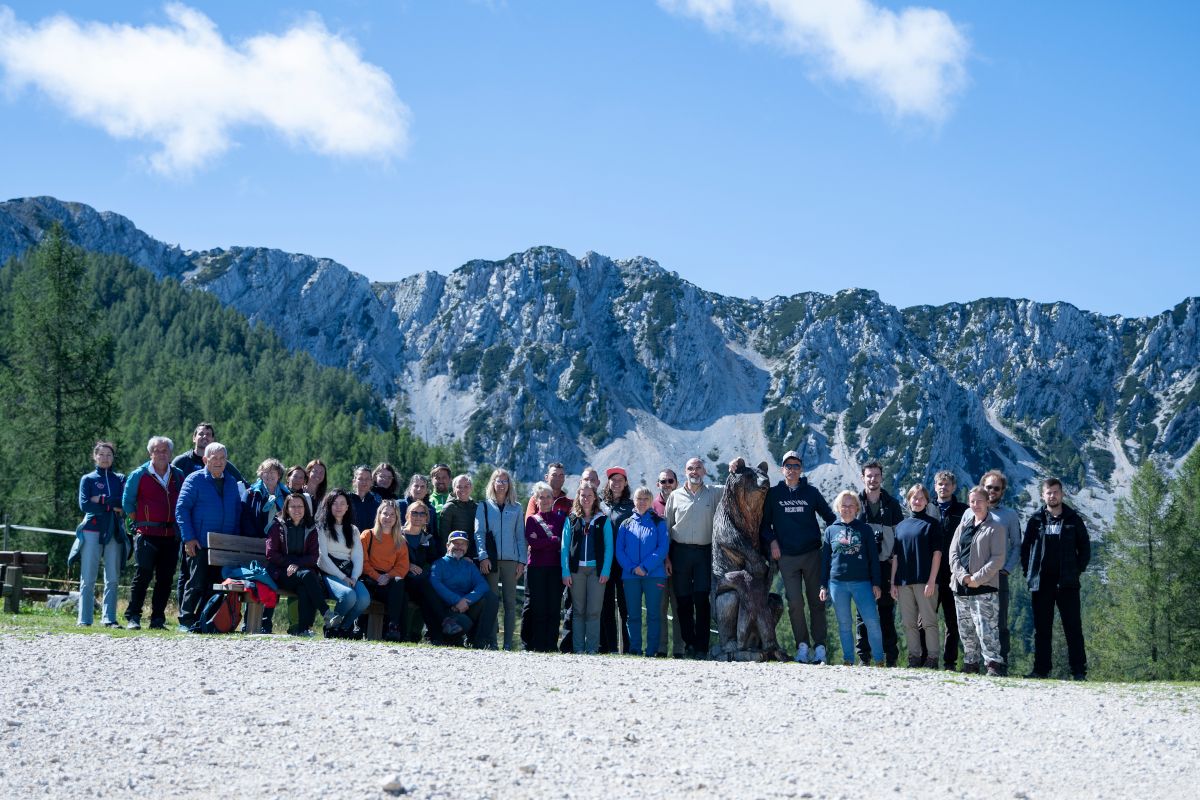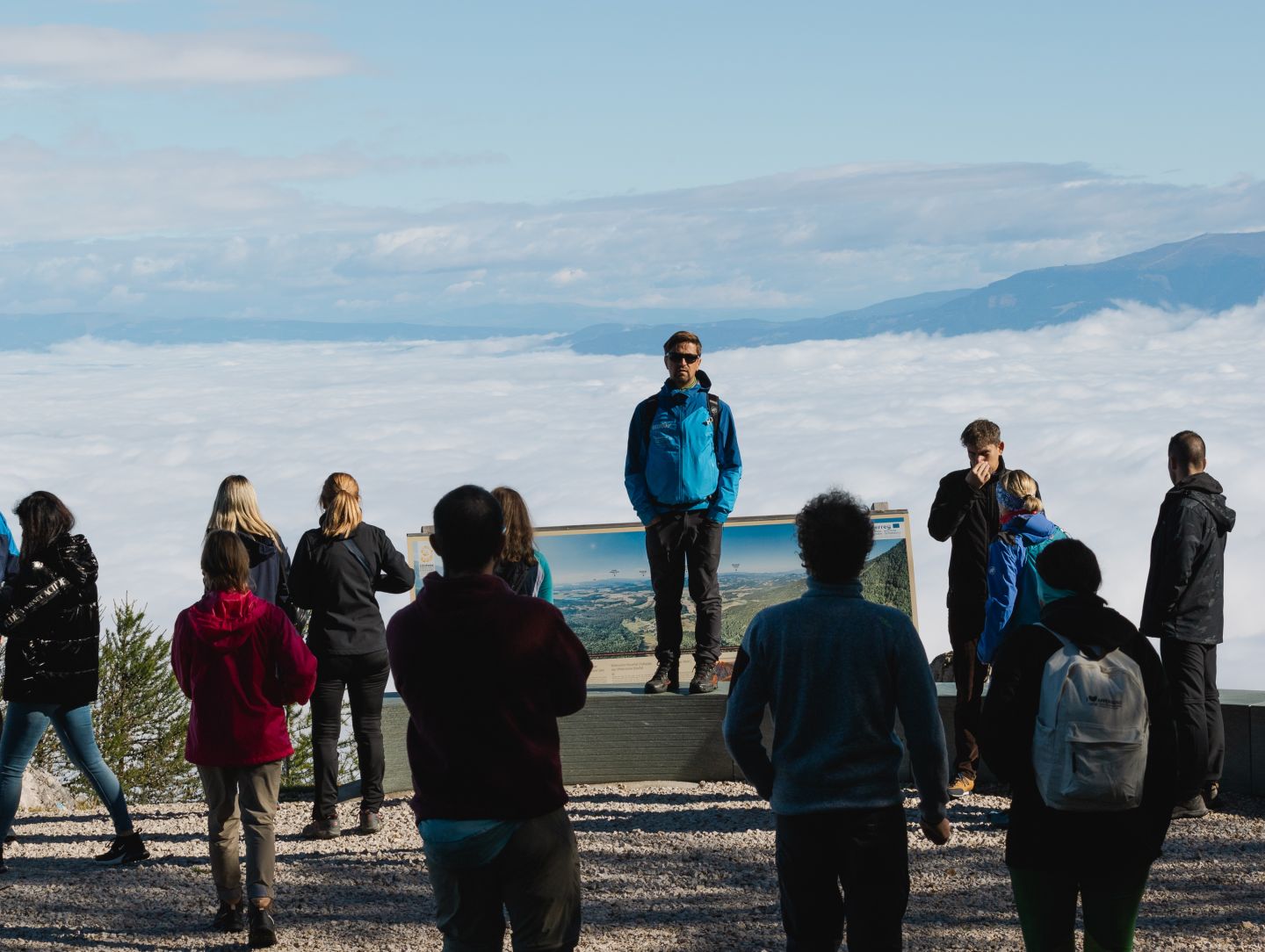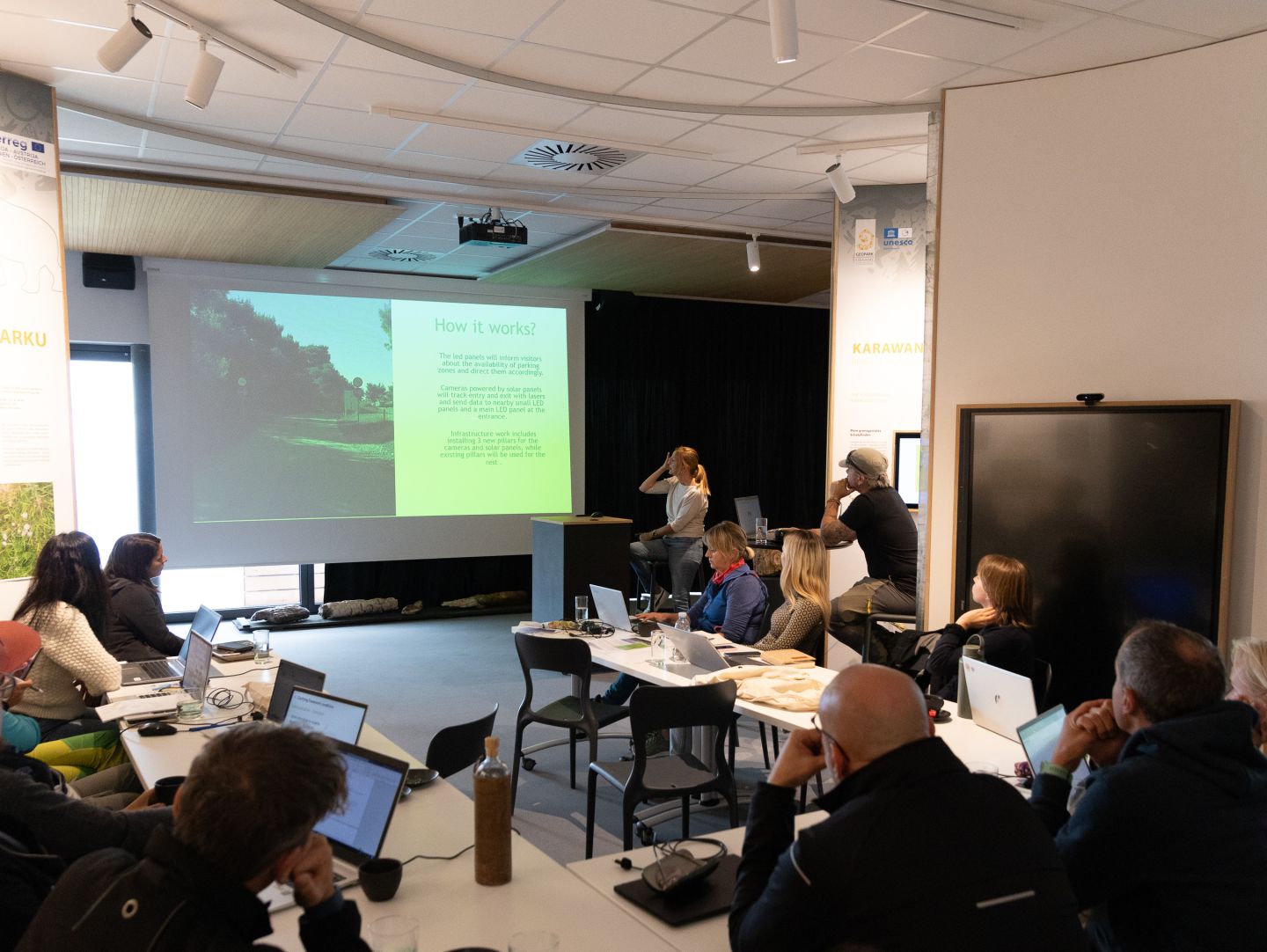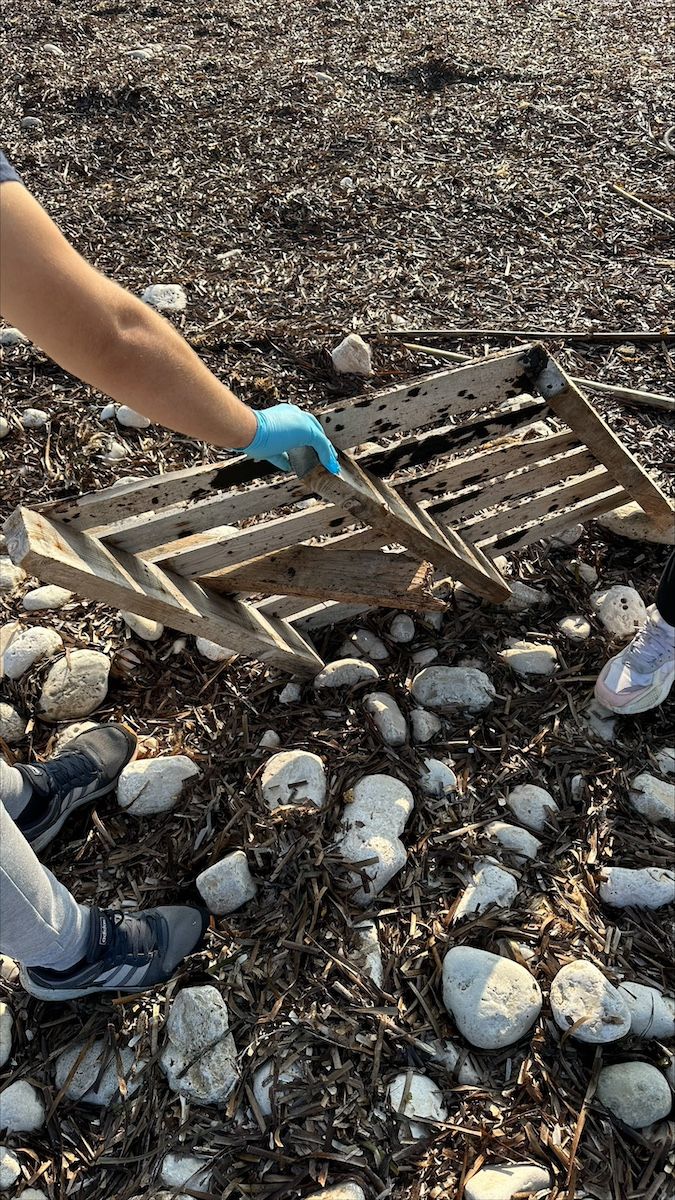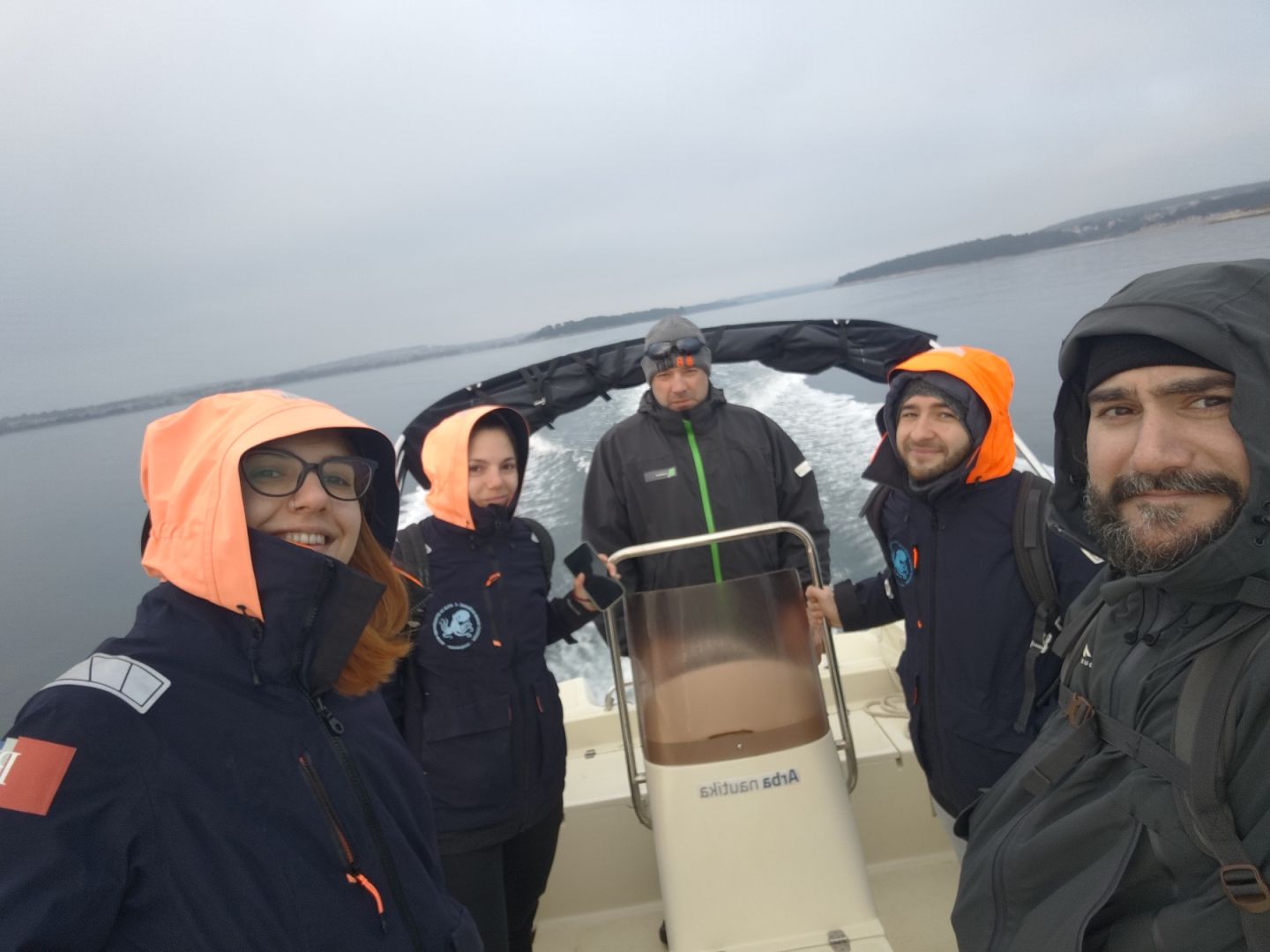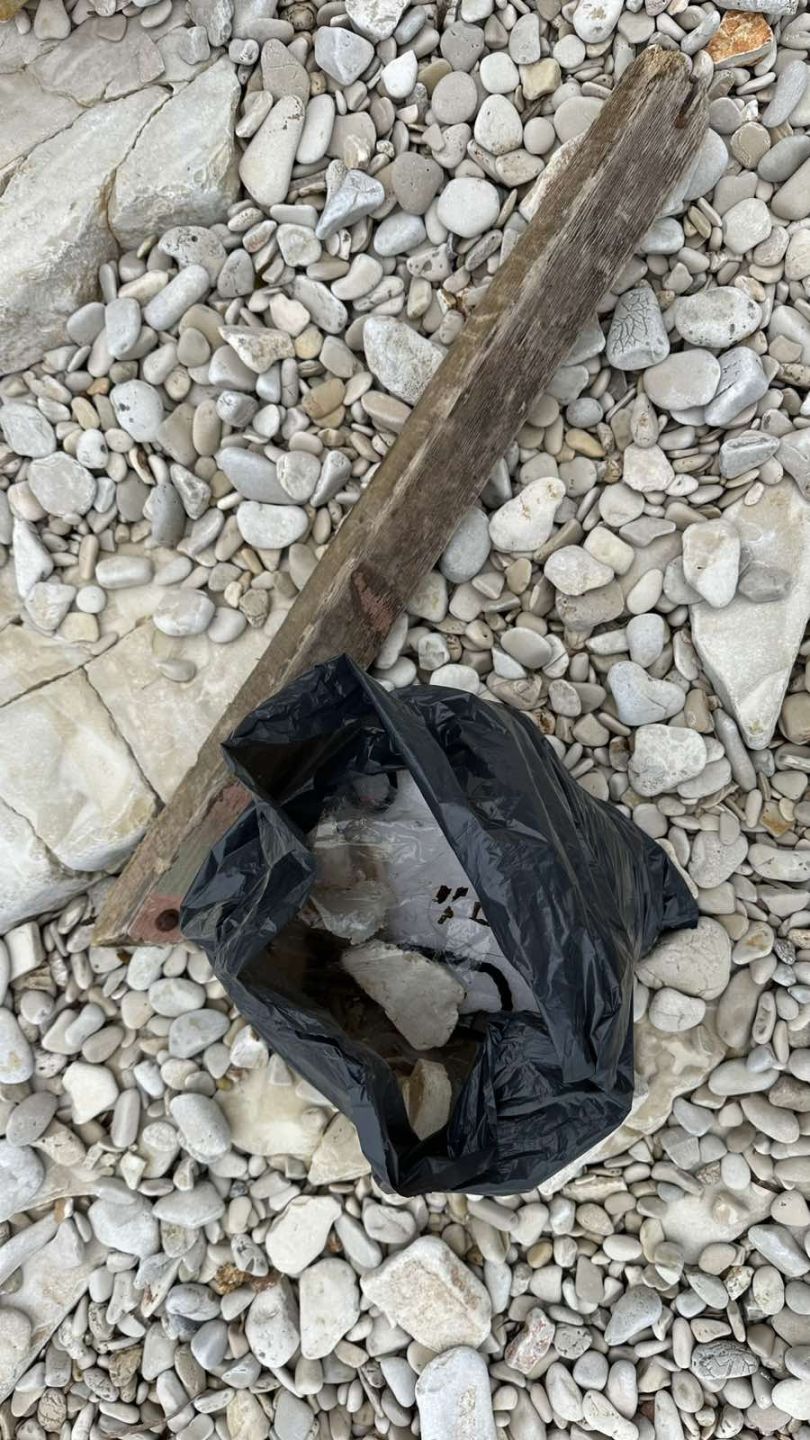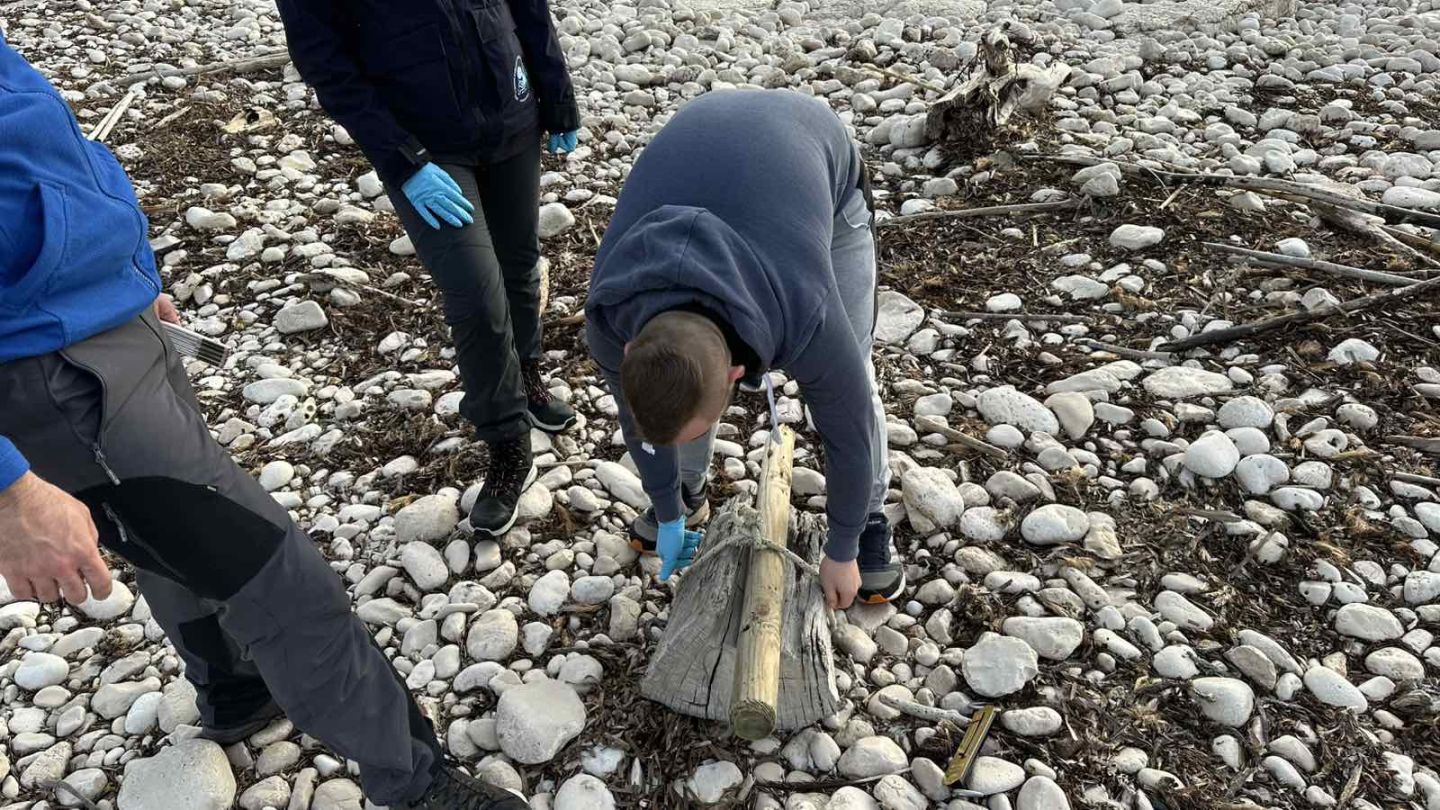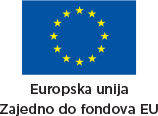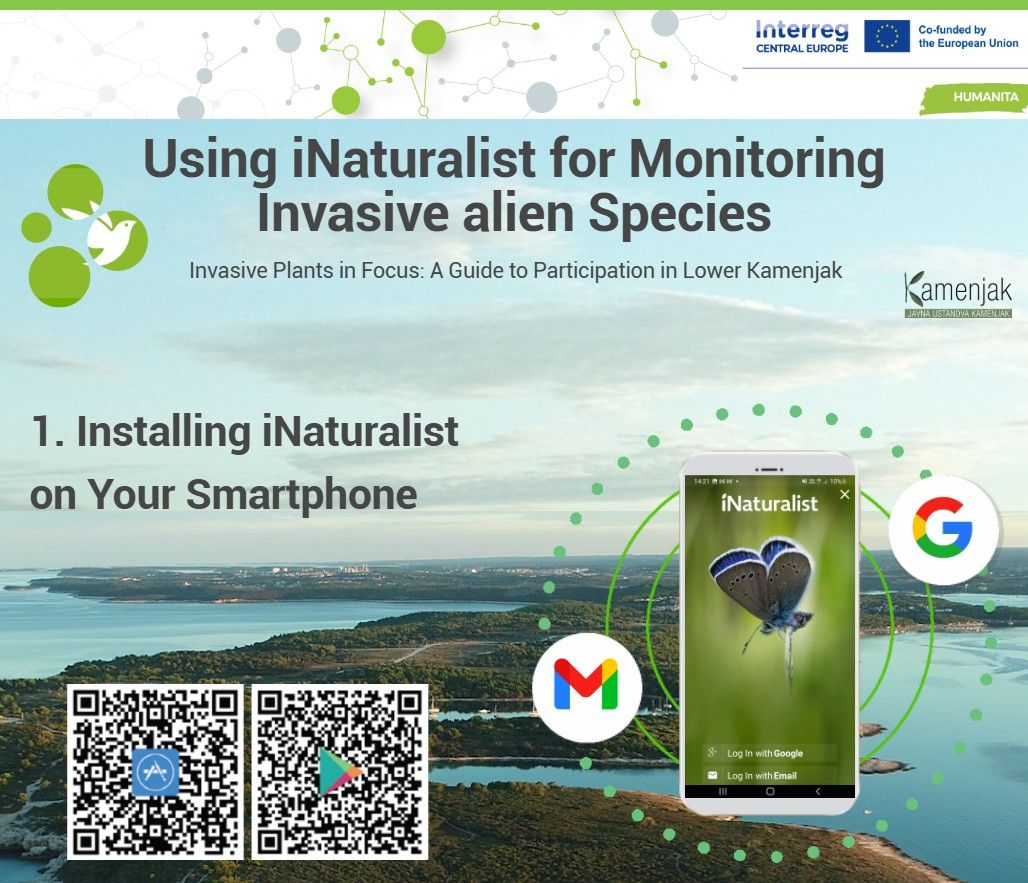
HUMANITA - Human-Nature Interactions and Impacts of Tourist Activities on Protected Areas
Project name: HUMANITA - Human-Nature Interactions and Impacts of Tourist Activities on Protected Areas
Total budget: 2.396.346,70 EUR
Co-financed by the ERDF Funding (80 %) : 1.917.077,36 EUR
Project duration: 1.4.2023 – 31.03.2026
The HUMANITA project develops evidence-based and participatory management tools that allow regions to better monitor and evaluate the impact of tourism in protected areas. The partnership involves tourists and local communities in the development of their solutions, which helps to collect data, create more awareness and change behaviour.
CHALLENGE
Tourism in protected areas is a sensitive issue. It is sometimes hard to find the right balance between preserving these and opening them up to visitors. With a growing number of visitors and visitor activities, protected areas in Central Europe experience an increase of human-nature conflicts arising.
PARTNERSHIP
Leadpartner:
University of Žilina, Slovakia
Project partners:
Eurac research, Italy
University of Parma, Italy
NOTITIA, Croatia
Carinthia UAS, Austria
EGTC Geopark Karawanken/Karavanke, Austria
Administration of National Park Malá Fatra, Slovakia
CEEweb for Biodiversity, Hungary
Public Institution Kamenjak, Croatia
Bükk National Park Directorate, Hungary
Tuscan-Emilian Apennine National Park, Italy
This project is supported by the Interreg CENTRAL EUROPE Programme with co-financing from the European Regional Development Fund.
“HUMANITA - Human-Nature Interactions and Impacts of Tourist Activities on Protected Areas”
Test and produce innovative solutions to assess the impact of tourist activities on nature.
Assist managers of protected areas to optimize them with nature protection.
Involve tourists and local communities in participatory monitoring to bring awareness-raising, trust-building, and behavioural change.
Enhance the protection of natural heritage, ecosystems, and valuable areas.
Develop ‘common heritage’ narrative for pilot sites.
5 Pilot actions testing new innovative monitoring methods
1 Transnational monitoring strategy
6 Solutions assessing the impact value of different types of tourist activities on nature
5 Local action plans to monitor and resolve human-nature conflicts in pilot sites
More information about the project:
“HUMANITA - Human-Nature Interactions and Impacts of Tourist Activities on Protected Areas”
NEWSLETTERS
With this newsletter, we will start a series of newsletters with the purpose of presenting our longstandingwork and effort in addressing the human-nature interactions and impacts of tourist activities on protected areas. Our goal is to show you what we have been doing in this regard until now, and what we expect toachieve in the future.
Working visit from our partners participating in the HUMANITA project
Last week we hosted a working visit involving our partners from the University of Parma, Italy, and the University of Žilina, Slovakia, with whom we undertake activities to improve the conservation and management of protected areas in Central Europe within the HUMANITA (“Human-Nature Interactions and Impacts of Tourist Activities on Protected Areas”) project. Our partners shot interesting aerial videos of our protected dry grassland in Donji Kamenjak (Lower Kamenjak) using a drone equipped with a high-quality camera, and another with a laser. These were basic, reference shoots and we plan to perform at least two more during the project implementation, in order to monitor the condition of our protected grassland areas as well as the impact on their condition and fragmentation made by visitor activities in Donji Kamenjak. Dry grassland covers most of Donji Kamenjak and is included in the Natura 2000 network. The grassland is also extremely important because it provides habitat to myriads of plant and animal species and is the prime habitat for orchids, which are especially numerous in Kamenjak, numbering as many as 30 different species.
The HUMANITA project will be carried out in association with 10 other partners from five Central European countries over the next three years. The project is supported by Interreg CENTRAL EUROPE 2021-2027, a programme that supports transnational cooperation, and is co-financed by the European Regional Development Fund.
#humanita #Interreg
#InterregCentralEurope
#tourism
#researchanddevelopment
#sustainability
#greenerCentralEurope
#commonheritage
#environmentalprotection
#svfuniza #euracresearch
#unipr #Notitia
#unescochair #fhkaernten
#cooperationiscentral
#unesco_mca
#visitgeoparkkarawanken
#npmalafatra #CEEweb #kamenjak
#PNATE #BNPI
From 17th to 19th October 2023 we participated in the meeting of project partners as part of the activities of the HUMANITA project that took place in Žilina, Slovakia. The meeting was hosted by the University of Žilina, the leading partner in the project. The highlight of this meeting was a visit to the beautiful Chleb pilot area within the Malá Fatra National Park. Representatives of the National park introduced us to the challenges they face, such as soil erosion and the creation of "wild trails", and the impact of soil erosion on the trails.
The goal of the HUMANITA project is to preserve and protect the sensitive ecosystems of protected areas and contribute to reducing the negative impacts of tourist activities on protected areas.
The HUMANITA project will be carried out in association with 10 other partners from five Central European countries over the next three years. The project is supported by Interreg CENTRAL EUROPE 2021-2027, a programme that supports transnational cooperation, and is co-financed by the European Regional Development Fund.
Foto: Urosh Grabner | Balázs Megyeri
hashtag#humanita hashtag#Interreg hashtag#InterregCentralEurope hashtag#tourism hashtag#researchanddevelopment hashtag#sustainability hashtag#greenerCentralEurope
hashtag#commonheritage hashtag#environmentalprotection hashtag#svfuniza hashtag#euracresearch
hashtag#unipr hashtag#Notitia hashtag#unescochair hashtag#fhkaernten hashtag#cooperationiscentral
hashtag#unesco_mca hashtag#visitgeoparkkarawanken hashtag#npmalafatra hashtag#CEEweb hashtag#kamenjak hashtag#PNATE hashtag#BNPI
Last week, we hosted our partners from the University of Parma, Italy, for their second working visit.
During this visit, they conducted another drone survey of protected grasslands and the entire Lower
Kamenjak area. Additionally, they filmed an educational trail using a 360° camera.
Through these recordings, we are monitoring the fragmentation of soil in protected grasslands and
the emergence of informal trails.
The HUMANITA project focuses on examining the impact of tourist activities on protected areas with
the goal of reducing negative environmental impacts caused by human activity. Lower Kamenjak and
the Medulin Archipelago are among the five pilot areas of the project where monitoring activities are
underway.
This project receives support from the INTERREG Programme Central Europe 2021-2027, with co-
financing provided by the European Regional Development Fund.
In the HUMANITA project, at the end of April and beginning of May, we initiated several interesting monitoring activities!
Experts from the University of Osijek, Department of Biology, conducted soil sampling to research microplastics in the soil while monitoring the distribution of earthworms throughout the entire Lower Kamenjak area, especially near the main road and parking areas.
Furthermore, for the coastal and marine areas, experts from the Ruđer Bošković Institute, Center for Marine Research in Rovinj, collected macroplastics and other waste on the beaches of Polje, Školjić, and the island of Ceja with the aim of monitoring and analyzing washed-up and discarded waste.
Through the HUMANITA project, we are researching the impact of tourist activities on protected areas, with the aim of minimizing negative human impacts on the environment.
Lower Kamenjak and the Medulin archipelago are one of the 5 pilot areas of the project where monitoring activities are being carried out.
We're collaborating on this project with 10 other partners from 5 Central European countries over the next 2 years. The project is supported by the Interreg Central Europe 2021-2027, co-financed by the European Regional Development Fund.
From May 14th to 16th, 2024, the third meeting of partners on the HUMANITA project took place. Since the Municipality of Medulin is an associate partner in the project, a representative from the Municipality of Medulin joined us at this meeting. The meeting was held in Italy, at Castelnovo ne'Monti - Tuscan Emilian Apennine National Park. We participated in a series of interesting presentations about the host national park, visited Pietra di Bismantova, one of the most famous symbols of the Appennino Tosco-Emiliano National Park, and discussed further activities and challenges of the project.
This was another exceptional experience for Public Institution Kamenjak in implementing international projects, strengthening international cooperation, and networking with national parks from Central Europe.
Humanita – 2nd Monitoring of Plastic Pollution on Pilot Beaches
As part of the HUMANITA project’s monitoring activities, experts from the Ruđer Bošković Institute’s Center for Marine Research in Rovinj conducted the second of four scheduled collections of macroplastics and other waste on the beaches of Polje, Školjić, and Ceja Island on July 23, 2024. This effort aims to monitor and analyze the accumulation of washed-up and discarded waste over the course of a year.
The HUMANITA project investigates the impact of tourism on protected areas, aiming to mitigate the negative effects of human activity on the environment. The significant landscape of Lower Kamenjak and the Medulin archipelago is one of the five pilot areas where these monitoring activities are being carried out.
4th International Meeting of the HUMANITA Project
From September 10 to 12, 2024, the Public Institution Kamenjak actively participated in the 4th international meeting of the HUMANITA project, which took place in the UNESCO Global Geopark Karawanken-Karavanke, on the border between Austria and Slovenia. This interesting event was held at the Geo.Dom visitor center, located at the pilot site of Mount Petzen/Peca.
During the meeting, discussions focused on the project's progress, achieved results, and budget expenditures. The Public Institution Kamenjak, as one of the pilot areas, presented completed and upcoming activities for the third project period, as well as activities expected in the near future. It was particularly emphasized that important aspects include mutual cooperation, collaboration, and the representation of work to the local community, as well as the introduction of participatory monitoring as a tool for involving the broader public in a “Citizen Science” approach.
The second day continued with a working meeting. Key presentations highlighted innovative methods for promoting visitor-friendly approaches while prioritizing nature conservation. A press conference and a workshop designed to engage the public and stakeholders in monitoring invasive alien species were also held, encouraging public engagement through citizen science initiatives.
Overall, the meeting was an outstanding success, fostering collaboration and laying the groundwork for future activities.
#humanita #Interreg #InterregCentralEurope #tourism #researchanddevelopment #sustainability
# greenerCentralEurope #commonheritage #environmentalprotection #svfuniza #euracresearch
#unipr #Notitia #unescochair #fhkaernten #cooperationiscentral #unesco_mca
#visitgeoparkkarawanken #npmalafatra #CEEweb #kamenjak #PNATE #BNPI
Foto: @Urosh Grabner Photos | Balázs Megyeri
On October 15, 2024, a team of experts from the Ruđer Bošković Institute – Rovinj Sea Research Center conducted the third data collection on macroplastics and other types of waste on the pilot beaches (Polje, Školjić, and Ceja Island). This activity represents ongoing monitoring and analysis of pollution, planned four times a year as part of the HUMANITA project, aiming to better understand the most common sources of beach pollution and to find prevention methods.
Monitoring of macroplastics began in April 2024. Previous monitoring activities were conducted during optimal periods in April, July, and October. Only one data collection remains, scheduled for the first quarter of 2025.
This research aims to raise awareness about environmental preservation and enhance sustainable management of the pilot area.
The fourth and final monitoring as part of the activities for tracking and researching the impact of tourism on protected areas was conducted in January 2025. This monitoring covered several key aspects, including field activities related to the collection of marine debris and the analysis of discarded macroplastics. The goal is to identify the most common sources of pollution and explore ways to reduce them, with continuous monitoring of long-term impacts on local ecosystems.
As part of the HUMANITA project, experts from the Ruđer Bošković Institute - Center for Marine Research Rovinj began collecting samples of macroplastics and other types of waste on the pilot beaches of Polje, Školjić, and the island of Ceja in early 2024. The monitoring activities last for one year and focus on analyzing the types and amounts of waste arriving on the coast, as well as developing preventive measures to reduce pollution.
The results of the research will be published soon.
Through the INTERREG Central Europe project HUMANITA, which investigates the impact of tourist activities on protected areas, we have developed an infographic related to the use of the iNaturalist app. The app aims to encourage citizen science in monitoring alien and invasive alien species, allowing users to record and share their observations of plants and animals.
You can view the infographic here.
This work was part of Work Package WP3, under Activity D.3.2.2 Green Academy, which focuses on community education and engagement in environmental protection. The HUMANITA project is supported by the INTERREG CENTRAL EUROPE Program 2021-2027, with co-financing from the European Regional Development Fund (ERDF).
- Info
- The objective
- Activities
- More information
- Working visit from our partners participating in the HUMANITA project
- Project HUMANITA – Meeting of project partners in Žilina, Slovakia
- HUMANITA - Second working visit of project partners on HUMANITA
- HUMANITA - monitoring activities have begun
- Project HUMANITA - Meeting of project partners in Castelnovo ne'Monti, Italy
- Humanita – 2nd Monitoring of Plastic Pollution on Pilot Beaches
- Project HUMANITA - Partner Meeting in the Karawanken-Karavanke Geopark, Austria/Slovenia
- Humanita – 3rd Monitoring of Plastic Pollution on Pilot Beaches
- Humanita – 4th Monitoring of Plastic Pollution on Pilot Beaches
- Using the iNaturalist app
Javna ustanova Kamenjak
Selo 120, HR-52100 Premantura
OIB: 09968170983
IBAN: HR5523400091110331952
Tel: +385 52 575 283
E-mail: info@kamenjak.hr
Pravila privatnosti | Uvjeti kupnje
Copyright 2026. Javna ustanova Kamenjak
Izrada web
stranica:
Play
Digital d.o.o.
Izrada Web aplikacije sufinancirana je sredstvima Europske unije iz Europskog fonda za regionalni razvoj.
Autori fotografija:
Morena Sinčić, Lovro Barbalić, Toni Koren, Petar Kružić, Bojan Širola,
Andrej Radalj,
Nediljko Landeka, Denis Bakša, Ivan Rosanda, Damir Grgić, Tibor Bereš, Ivica Lolić, Renata Šimić
 EU Projects
EU Projects English
English
